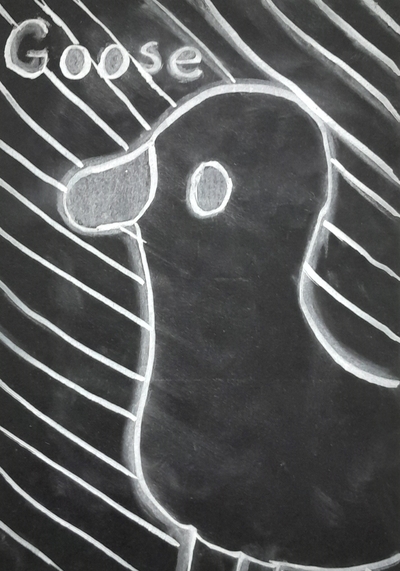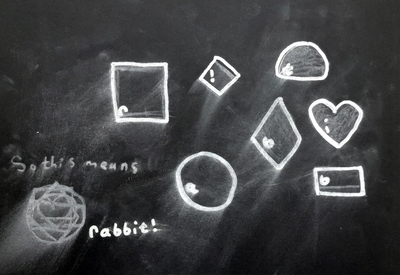
Starting the lesson
This is the part of the lesson that is always the same: we say hello, we talk about how we are and we introduce the new students aka all the new toys that the kids have brought to school that day. It is a lot of fun to see how they are getting better at it and how much smoother it is now, compared to what it used to be a few months ago.
Songs
Our song writing at the beginning of the lesson is getting better and better. We started with the official versions of the song, ‘March, March’, but it went on for only a week or two and then it took a new direction. Nowadays, we sing two versions of it. The first one could be labelled as ‘my favourite month’ and some kids sing a verse about Christmas and Santa coming (presents, presents!) or about their favourite month. The second one is just a long and musical answer to a question ‘How do you feel today?’ and everyone is becoming more and more creative. This is definitely one of my favourite parts of the lesson these days and we usually have six or seven variations. And the language that is coming out of it! I am over the moon!
Another song that we started to sing in March is another hit from Super Simple Song, The Seasons Song. It is not a very new song, it was published a year ago but I have just found it while I was looking for something about spring. I love it. The lyrics are great and not so easy and the music is uplifting, a perfect song for the morning. We have been singing it for about a week now but soon I would like us to write our own versions of the song. I am hoping there will be different things that we can sing and love about the spring, not only the flowers…
Rules and classroom language
I have come up across an interesting problem related to rules and classroom management and I am now in the middle of considering all the implications and the steps I will have to take to sort it out.
I have realised that for some of my students our interactive lessons, so different to their ‘typical’ national curriculum classes and the approach of their national curriculum teachers have given an idea that the English lessons are not serious and that, for example, they don’t need to think about the rules that much or that they can simply op out of the activities as they would opt out of a game…I am not sure what it means yet but I know that I need to do something and introduce some changes. More on that later.
Story
We did a lot of storytelling in March. We were practising jobs and that is why we watched an episode of Steve and Maggie and turned it into a role-play. We also read and listened to our first story in verse from our coursebook, Lenny, Jenny and the Jumperoo. The story was quite long but the kids were really involved and with all the illustrations and proper staging, we made it into a good lesson.
And, after the success of the Wocket in the Pocket (which we also read again in a shared reading session), I decided that we are ready for the Green Eggs and Ham. We read it together, properly and it was a lot of fun. Our copy is a collection of five or six Dr Seuss’ stories and once my kids saw the other ones, they immediately made a plan for the next few weeks and the order in which we will read them all. I think we can say that Dr Seuss will be a frequent guest in our lessons!
Socialising
We kept working on our class friendships. We have done a lot of pairwork (surveys with different partners), we have played bamboozle, ‘Tell me’ and Wordwall Quiz, as one big team, collecting the points for our class. We have done a few ball games and we have even tried some Maths multiplication boardgames. The kids also had a chance to cooperate with each other during the treasure hunt activities as they could choose to work in pairs or small teams.
Creativity
Since our February was not the most creative on months, I tried to make up for it in March:
- we wrote a lot of songs and this way we produced a lot of langauge
- we read a poem and we wrote our first poem in English
- one of the topics in March was ‘Inventions’ and we created our own inventions
- we had a great lesson about Alfonso Pomodoro, a ghost and we used his interview with Miss Viola as a model for our own interviews with characters and we role-played these later.
- we acted out our versions of the Steve and Maggie conversation from the video
Teacher
It has been a good month. We did our third milestones test in Maths and English and it was just great to see that so many of my students got excellent results. Although, all of them worked hard and I am proud of every single one of them! It is really a pleasure to look at how they work and get better and I even had to write a whole post about it!
A few months ago we started our dear diary project and some of the kids still continue writing and I get so much pleasure from reading them and replying. Especially when they give the notebook to me, then pester me to read it straight away and keep asking whether I have already replied or not and then they get their answer, read it as soon as possible and try to reply within the same day. We ARE communicating!
We have just started division in Maths and we are about to start unit 6 on Dinosaurs in English! Exciting!
Also, I bumped into Santa and managed to get out of him a pile of handwriting erasable notebooks and this is why I could give my kids the most amazing present that, within minutes, they started to use to write, in English and in Russian, to draw, to create stories, to take notes, to calculate Maths…
Happy teaching!






























